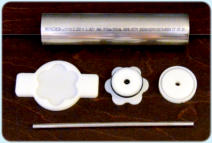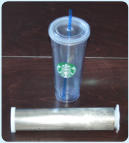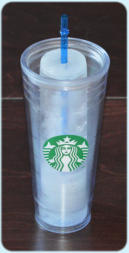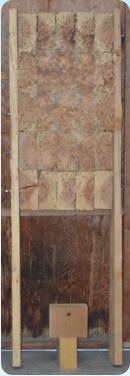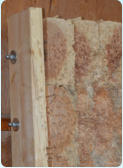Updated - September 8, 2022 - Copyright - Ralph Gibson - 2014

Other Projects
Included on this page are a number of miscellaneous projects. Please click on an
image for a larger view.
New Hobby - Knife Throwing:
After watching YouTube videos on No-Spin Knife Throwing, decided to
give it a try. Following a review on YouTube by Adam Celadin, I purchased two sets of
throwing knives from DXB-Sport. One set of the Drago knives, and one set of the Viserys
knives. These are very nice heavy duty steel knives about 10” in length, and just under
1/4” thick. Both sets are great, but I do like the Viserys style a bit better.
I started out trying to throw into a pine plank that I had as a target, with little luck. So I
made an end grain throwing target out of regular 4” x 8” lumber. I based the design on
an example April Wilkerson showed in her YouTube video, “Making an End Grain Knife
Throwing Target”. In this design the blocks that make up the target are not glued
together, and can be removed and replaced as necessary. My target is somewhat larger,
with five rows x five columns of 4” x 8” segments, each 6” in length. This results in a throwing target
about 18” x 37” overall. Each block has a 7/8” hole drilled through as shown, to pass a length of 1/2”
PVC pipe. Each row of blocks, has a length of 5/16”-18 threaded rod passed through the PVC pipe. The
ends of the threaded rod are secured with 5/16” over-sized washers, Nylon Lock Nuts, and Cap Nuts. The
first target was made with 2” x 4” x 5-3/4” lumber, but it didn’t hold up very well.
So far, the hobby is providing some excellent light exercise, with lots of walking and bending to pick the
knives up off the garage floor. I’ve been practicing for about a year now, and am seeing quite a bit of
improvement, though I have a long way to go. One of the best tutorials I’ve seen on YouTube was
created a few years ago by Samoth Chipmah, “No Spin Knife Throwing Tutorial”. A nice feature of the
tutorial, is that there is an index in the description, showing at which point in the video different topics
are located. Making it easy to locate specific areas of the video to review as needed.
Ice Mold for 24 oz. Thermal Glass:
Since I prefer to drink water cold, I decided to
create a stainless steel mold for a large ice
cube for a 24 oz. thermal glass.
Left Image: At the top of the first image is a
2-1/8” ID x 2-1/4” OD stainless steel tube.
The HDPE parts in the center were fabricated on my CNC mill. On the left is a “wrench” to
help in removing the O-Ring base. In the center is the O-Ring base, and on the right is a
cap to keep a stainless steel tube centered while freezing. At the bottom of the image is
the 5/16” OD stainless steel tube which creates space in the ice cube for a plastic straw.
Tried to freeze the ice cube with a plastic straw in place, but the straw was crushed by the
ice while freezing. So far the stainless steel tube was used for the straw channel.
Center Image: To freeze the ice block, the mold is filled with water, set in a small bowl, and placed in
the freezer. Shown here is the 24 oz. glass and the ice mold removed from the freezer. While freezing,
the ice block expands pushing the O-Ring base, shown in the right end of the tube, slightly out of the
large stainless steel tube.
Right Image: If the ice mold is removed from the freezer and left on the counter for 30 to 45 minutes,
the large stainless steel tube warms enough to allow the ice block to slide out. After placing in the glass,
it usually requires a few breaths blowing through the stainless steel tube, to warm it enough to slide out.

